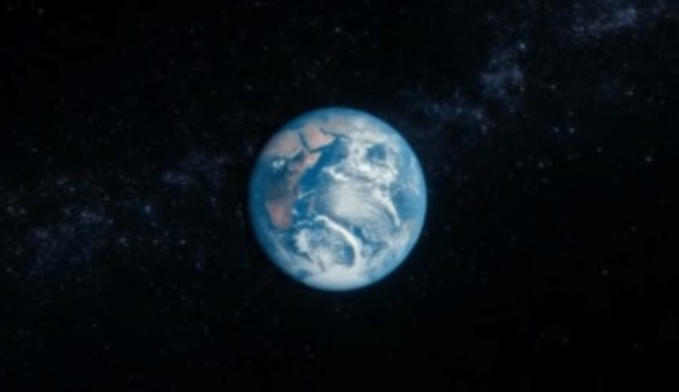





“The image of a
dangerous world
has never been
broadcast more
effectively than it is
now, while the
world has never
been less violent
and more safe.”
- Hans Rosling
How to Spend Two Hours Learning about the True
Greatness of the World & Humanity
During my early years as a student journalist, I developed a business
plan to start a national newspaper that printed only positive and
inspirational feature articles like the kind I have always enjoyed writing.
The tentative masthead was “Good News Times.” After much
consternation and false starts, I overcame this shortsighted naiveté
with the realization that nobody would consistently read such a
newspaper. Good news is boring. We are more attracted to bad news.
That’s what sells. We see it day-in and day-out in today’s mass media.
It’s typically described as “negativity bias” – a term that explains our
penchant for mostly bad news. “Realistic optimism” is its opposite.
I’m currently reading three inspirational and realistically optimistic-in-
the-extreme books that cogently address this issue of negativity bias,
along with addressing numerous other wrongheaded attitudes and
biases we possess that wind up promoting mistaken ways of thinking
about our world: “Enlightenment Now: The Case for Reason, Science,
Humanism and Progress,” by Steven Pinker; “Factfulness: Ten Reasons
We’re Wrong About the World–and Why Things Are Better Than You Think,”
by Hans Rosling with Ola Rosling and Anna Rosling Rönnlund; and
Pinker’s previous extraordinary book (among many), “The Better Angels
of Our Nature: Why Violence has Declined,” – published in September
2012.
Enlightenment Now came out in February of this year on Kindle. Both
Pinker books are long, with Better Angels at 806 paperback pages, and
Enlightenment Now at 576 pages. Factfulness came out on Amazon on
April 3, and it is 320 pages.
As all three titles suggest, these books promote positive vibes about
humanity and our planet backed by science and data that mostly goes
unnoticed by the vast majority of us (as opposed to negativity-bias vibes
that consistently garner more eyeballs).
In Enlightenment Now, Pinker writes, “as we care about more of
humanity, we’re apt to mistake the harms around us for signs of how
low the world has sunk rather than how high our standards have risen.”
And Rosling adds how “the image of a dangerous world has never been
broadcast more effectively than it is now, while the world has never
been less violent and more safe.”
Now there’s plenty of room to refute such world-progress-oriented
statements with horrific examples of terrorism, refugees, the war in
Syria, the fact that more than one billion people live in substandard
housing worldwide, and on and on, but, from an historical perspective
there’s plenty of room to support such statements as well.
If you don’t want to, nor have the time to, read their books, force
yourself to check out how Pinker tortuously dolls out his world
positivity views with one Power Point slide after another during a one-
hour presentation he gave on Enlightenment Now in March at the Cato
Institute. Rosling, who is much more entertaining, presents his work
through his now famous bubble charts and maps, bolstered by his
infectious enthusiasm. Start with his BBC one-hour presentation in
November 2013, titled “Don’t Panic: The Facts About Population.”
Just spending two hours closely listening and watching these –
regardless of Pinker’s tediousness – will teach you a lot about the world
that you more than likely had no clue about before.
You can also see more videos of Pinker’s work at
https://stevenpinker.com/pages/media. And Rosling’s Gapminder
organization website has loads of additional great video at
https://www.gapminder.org/videos-2/.
Thanks for stopping by,
George






© Copyright 2023. UnderstandingXYZ.com. All rights reserved.
How to Spend Two Hours Learning
about the True Greatness of the
World & Humanity
During my early years as a student journalist, I
developed a business plan to start a national
newspaper that printed only positive and
inspirational feature articles like the kind I have
always enjoyed writing. The tentative masthead was
“Good News Times.” After much consternation and
false starts, I overcame this shortsighted naiveté with
the realization that nobody would consistently read
such a newspaper. Good news is boring. We are more
attracted to bad news. That’s what sells. We see it
day-in and day-out in today’s mass media. It’s
typically described as “negativity bias” – a term that
explains our penchant for mostly bad news. “Realistic
optimism” is its opposite.
I’m currently reading three inspirational and
realistically optimistic-in-the-extreme books that
cogently address this issue of negativity bias, along
with addressing numerous other wrongheaded
attitudes and biases we possess that wind up
promoting mistaken ways of thinking about our
world: “Enlightenment Now: The Case for Reason,
Science, Humanism and Progress,” by Steven Pinker;
“Factfulness: Ten Reasons We’re Wrong About the
World–and Why Things Are Better Than You Think,” by
Hans Rosling with Ola Rosling and Anna Rosling
Rönnlund; and Pinker’s previous extraordinary book
(among many), “The Better Angels of Our Nature: Why
Violence has Declined,” – published in September 2012.
Enlightenment Now came out in February of this year
on Kindle. Both Pinker books are long, with Better
Angels at 806 paperback pages, and Enlightenment
Now at 576 pages. Factfulness came out on Amazon
on April 3, and it is 320 pages.
As all three titles suggest, these books promote
positive vibes about humanity and our planet backed
by science and data that mostly goes unnoticed by
the vast majority of us (as opposed to negativity-bias
vibes that consistently garner more eyeballs).
In Enlightenment Now, Pinker writes, “as we care
about more of humanity, we’re apt to mistake the
harms around us for signs of how low the world has
sunk rather than how high our standards have risen.”
And Rosling adds how “the image of a dangerous
world has never been broadcast more effectively
than it is now, while the world has never been less
violent and more safe.”
Now there’s plenty of room to refute such world-
progress-oriented statements with horrific examples
of terrorism, refugees, the war in Syria, the fact that
more than one billion people live in substandard
housing worldwide, and on and on, but, from an
historical perspective there’s plenty of room to
support such statements as well.
If you don’t want to, nor have the time to, read their
books, force yourself to check out how Pinker
tortuously dolls out his world positivity views with
one Power Point slide after another during a one-
hour presentation he gave on Enlightenment Now in
March at the Cato Institute. Rosling, who is much
more entertaining, presents his work through his
now famous bubble charts and maps, bolstered by
his infectious enthusiasm. Start with his BBC one-
hour presentation in November 2013, titled “Don’t
Panic: The Facts About Population.”
Just spending two hours closely listening and
watching these – regardless of Pinker’s tediousness –
will teach you a lot about the world that you more
than likely had no clue about before.
You can also see more videos of Pinker’s work at
https://stevenpinker.com/pages/media. And Rosling’s
Gapminder organization website has loads of
additional great video at
https://www.gapminder.org/videos-2/.
Thanks for stopping by,
George
“The image of a
dangerous world
has never been
broadcast more
effectively than it is
now, while the
world has never
been less violent
and more safe.”
- Hans Rosling

























